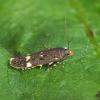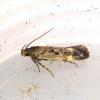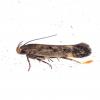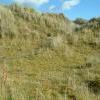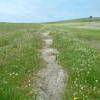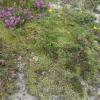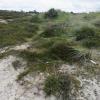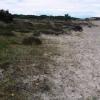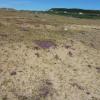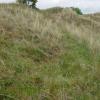35.048 Bryotropha umbrosella (Zeller, 1839)
Status and Distribution
Very local, occuring in sandy coastal areas over much of the British Isles; rare on the Western Isles of Scotland, otherwise absent from much of western Scotland, Orkney, Shetland and northern parts of Northern Ireland. Rare inland.
Following research by the County Moth Recorder, the sole record of this species in VC39 (Staffordshire) is now considered unverified. The associated 10km dot on the map opposite will be removed in the next data refresh.
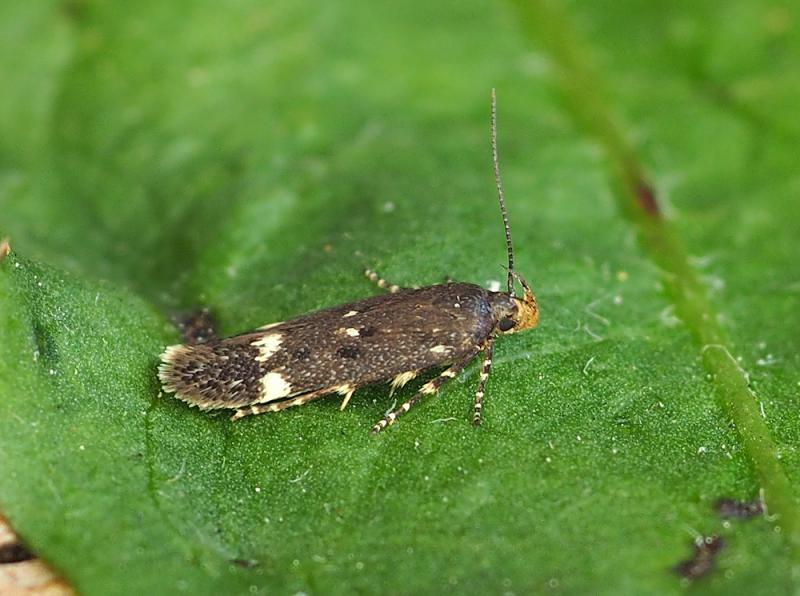
Provisional map
Foodplant and Larval Feeding Signs
Found amongst Ceratodon purpureus (redshank), see distribution map, presumed to be the main food-plant, and observed eating fine-leaved grass blades (probably a Festuca sp.). See Heckford and Sterling, 2002 for more details.
A larva can be detected by the presence of small piles of granular frass at one end of a flimsy silk tube incorporating sand grains and chewed moss fragments. The larva lives amongst the moss at ground level in the tube which is open at both ends. In captivity and during its final instar the larva extended the tube in sinuous branches over the surface of the moss incorporating sand grains.
Finding the Moth
Larva: produces small piles of granular frass at one end of a flimsy silke tube incorporating sand grains and chewed moss fragments. The larva lives amongst the moss at ground level in the tube which is open at both ends.
Adult: readily disturbed during warm sunny conditions, becomes active around dusk and can be attracted to light in numbers.
Similar Species
The usual dark form of B. umbrosella superficially resembles Eulamprotes atrella, Aproaerema anthyllidella and Syncopacma sangiella, particularly if it is lacking or only has one bright white scale in the centre of the forewing. All three are larger, longer-winged moths and always have a slight yellowish or ochreous tinge to their pale scales. Even when faded or slightly worn, it is still usually possible to see the single or small group of pure white scales in B. umbrosella just beyond the prominent black spot in the fold (the lowest of the three black spots nearest the base of the wing).
The clear white costal and tornal patches contrasting with the almost black forewing readily separate it from B. affinis and B. similis, but when these white markings are muted or absent, dissection may be necessary.
The light forms of B. umbrosella can have the forewing ground colour greyish (f. portlandicella) to whitish (f. mundella) whereas pale forms of B. affinis are ochreous to brownish.
Single brooded from late May to mid-August.
Earliest: 15th May 1997 (VC9)
Latest: 2nd September 2005 (VC44)

